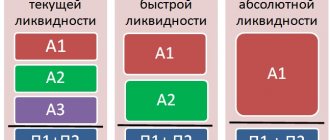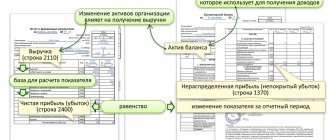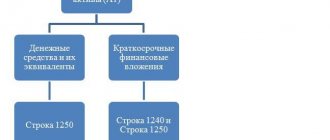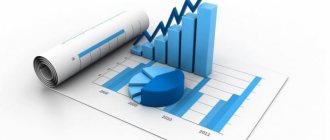What are other current assets?
Other current assets (OCA) are minor items on a company's balance sheet that are combined into one account because they are not important enough to warrant a separate list . These assets are not cash or cash equivalents and represent a limited source of liquidity for the company.
Take our proprietary course on choosing stocks on the stock market → training course
Reports may contain references that indicate what is included in other categories of current assets for the benefit of investors who want to gain more information about the firm. Typically, the amount of such assets is small and may not have a significant impact on the overall financial position of the company.
POA is a category of assets that a firm owns, benefits from, or uses to generate income. It can always be converted into cash within one business cycle. They are referred to as "other" because they are unusual or insignificant, unlike typical current asset items.
POA are indicated in line 1260 of the balance sheet and are part of current assets.
Important! For the term 1260, the amounts of PAP are reflected that meet the conditions:
- circulation period up to one year or cycle;
- data and information about these funds is not significant when analyzing the financial condition of the company;
- the data cannot be reflected on other lines of current assets;
- the amounts are very small;
- amounts are reflected at the end of the year in the balance sheet.
Important! When assessing the financial condition, an analysis of the turnover of working capital is carried out for each line, including in relation to POA. The growth of the turnover rate has a positive trend and indicates an increase in the efficiency of their use in the company. With a decrease in the turnover rate, we can talk about a decrease in the efficiency of using POA,
What do other current assets include?
Balance sheet line 1260 may include assets such as:
- Proceeds from the sale of property for which title has not yet been registered to the buyer. In this case, you can enter a decoding line in the balance sheet or issue an explanatory note.
- Accrued VAT on revenue that temporarily cannot be taken into account (the conditions for recognizing revenue are described in PBU 9/99).
- The cost of damaged material assets and shortages, the source of compensation for which is temporarily not determined.
- VAT on advances and excise taxes, the reimbursement of which is planned in the near future.
- The amount accrued but not billed for payment under a construction contract (for more details, see PBU 2/2008).
- The cost of shares (shares) purchased for their further resale.
You can find out which accounting account data is used when filling out line 1260, and see an example of filling out the line in the Guide from ConsultantPlus. You can get trial full access to the system for free.
Read about the preparation of accounting entries in the material “Basic accounting entries - examples.”
Composition of other current assets
The following categories may be included in the PAA:
- sales revenue that was not recognized;
- VAT on the above revenue;
- defective products or goods and materials;
- if the registration process is not completed, the right to property;
- shortage of goods and materials in the absence of a culprit;
- shares that were purchased for the purpose of immediate resale.
Important! When including amounts in the POA, the debit balance of such accounts as: 45, 46, 62,68,69,81,94 is used.
Practical use
“Other current assets” is information that is not included in other lines. These amounts do not fit into other sections and are accounted for separately. If there is a need to detail these figures, then line 12605 “Future expenses” is used.
In order to correctly fill out the balance, you can use the debit balance of accounts when creating a line about other working capital: 45, 46, 62, 68, 69, 81, 94. The value of the indicator on line 1260 also depends on the balances on analytical accounts 62-VAT, 68 ( excise taxes), 76-VAT and 45-VAT at the reporting date. Also, depending on the type of assets, information and lines 1450 “Other liabilities” should be reflected in other assets, which also cannot reflect significant long-term liabilities.
Other current assets include amounts of value added tax on goods shipped to the final buyer, when the proceeds from sales from these transactions cannot yet be recognized for accounting in the company’s accounting department for a number of reasons:
- Additional terms of the agreement have been introduced;
- Barter transactions are carried out;
- Availability of intermediaries for product sales.
Essence and understanding
The company's assets are reflected in the balance sheet as fixed assets and current assets (current assets). Fixed assets are typically long-term tangible assets, such as buildings, computer equipment, and land, that a firm owns and uses in its operations to generate income. They have a useful life of more than a year and are not liquid.
Current assets, on the other hand, are all of a company's active assets that are expected to be readily and easily sold, consumed, used, or depleted in the normal course of the firm's business operations. They can be easily sold for cash, usually within one year, and are taken into account when calculating the firm's ability to pay short-term obligations.
There are revolving funds that are unusual, non-standard. They do not fall into any of the specific categories listed above. These assets are grouped together under the "other" category. They will be reflected as other current assets (OCA) on the balance sheet.
Examples of POA:
- advances paid to employees or suppliers;
- part of the property that is being prepared for sale;
- limited funds or investments;
- issuance of life insurance policies.
Advantages and disadvantages of formation
Advantages of forming other current assets:
- by creating this category, full accounting of all short-term assets that are individually insignificant and non-standard occurs;
- within one category, the accounting process is simplified.
Disadvantages of forming a group:
- lack of clarity, since some companies do not form such assets;
- any asset position that has outgrown the one-year period or one business cycle must be rolled over into any long-term asset class. However, there are cases where such assets are ignored and erroneously retained under other current assets, which is an important deficiency. In this case, working capital requirements increase.
- Sometimes an increase in one of the assets is offset by a decrease in another asset as part of other current assets. In such a scenario, there are unlikely to be significant differences in the aggregate and therefore the change in individual assets is ignored.
Calculation examples
Let's look at a few examples to understand this category of assets.
Example No. 1.
Let's consider an example of including an asset in other current assets.
Initial data:
- In company X, an audit of the availability of property was carried out, as a result of which a shortage in the amount of 16 thousand rubles was revealed;
- On March 24, an advance payment for products was received in the amount of 236 tr, including VAT;
- On March 29, the products were shipped under the contract. The cost of sales is estimated at 354 thousand rubles, including VAT;
- the cost of sales was 180 tr.
Reflection in accounting
| No. | Operation | Dt | CT | Amount, t.r. |
| 1 | Write-off of the cost of shortage | 91 | 41 | 16 |
| 2 | Receiving an advance payment | 51 | 62Av | 236 |
| 3 | VAT calculation | 76 | 68 | 36 |
| 4 | Reflection of product shipment | 45 | 41 | 180 |
| 5 | VAT calculation | 76 | 68 | 54 |
Line 1260 reflects the following amounts:
16+36+54 = 106 tr.
Example No. 2. Example of calculating the POA.
The initial data is shown in the table below.
| Article | 2017, t.r. | 2018, t.r. |
| Reserves | 47899 | 55477 |
| Accounts receivable | 23459 | 28444 |
| Cash | 7855 | 9411 |
| Total current assets | 85090 | 103073 |
Calculation of the value of other current assets:
- 2017: 85090-47899-23459-7855 = 5877 TR;
- 2018: 103073-55477-28444-9411 = 9741 tr.
The calculated data will allow us to conclude that the value of the LOA increased by 3864 tr.
Other current assets. Line 1260
This line indicates information about the organization’s other current assets not listed above. It is necessary to take into account that the organization’s current assets, information about which is significant, must be reflected in section. II Balance sheet separately. Therefore, significant indicators should not form the indicator of line 1260 “Other current assets” (paragraph 2 of clause 11 of PBU 4/99, Letter of the Ministry of Finance of Russia dated January 24, 2011 N 07-02-18/01).
What can be included in other current assets?
They may be taken into account as part of other current assets provided that the relevant indicators are not significant, for example:
- the cost of missing or damaged material assets, in respect of which a decision has not been made to write them off as production costs (sales costs) or to the guilty parties, reflected in the debit of account 94 “Shortages and losses from damage to valuables” (Instructions for using the Plan accounts);
- amounts of excise taxes that are subsequently subject to deductions (Articles 200 - 201 of the Tax Code of the Russian Federation, Letter of the Ministry of Finance of Russia dated April 10, 2006 N 03-04-06/50);
— VAT amounts accrued upon shipment of goods (products, other valuables), the proceeds from the sale of which cannot be recognized in accounting for a certain time (clause 1, clause 1, article 167 of the Tax Code of the Russian Federation, clause 12 of the Accounting Regulations “Revenues”) organizations" PBU 9/99, approved by Order of the Ministry of Finance of Russia dated May 6, 1999 N 32n), accounted by the organization separately on account 76 "Settlements with various debtors and creditors" or on account 45 "Goods shipped";
- amounts of VAT and excise taxes accrued on unconfirmed exports and subsequently subject to reimbursement from the budget (in order to include an asset in the balance sheet on the date of preparation of the financial statements, there must be a reasonable probability that the organization will receive any economic benefits in the future from this asset (clause. clauses 8.1, 8.1.1, 8.3 of the Concept of Accounting in the Market Economy of Russia).If it is likely that the identified shortages and losses from damage to valuables or the amount of VAT and excise taxes on export transactions will not be reimbursed, then, guided by the principle of prudence, the organization should recognize the corresponding expense of the reporting period (clause 6 of PBU 1/2008, clauses 17, 19 of PBU 10/99).At the same time, the amount (or range of amounts) of compensation, the receipt of which the organization still considers possible under certain circumstances not under control it is disclosed in the notes to the financial statements as the estimated value of the contingent asset (clauses 13, 14, 27 PBU 8/2010). (para. 2 clause 9 art. 165, para. 21 clause 7 art. 198 Tax Code of the Russian Federation, para. 2 Letter of the Ministry of Finance of Russia dated May 27, 2003 N 16-00-14/177).
What accounting data is used when filling out line 1260 “Other current assets”?
When filling out this line of the Balance Sheet, data on the debit balance on accounts 46, 94, debit balances on accounts 19 and 68 (in terms of excise tax amounts subject to subsequent deductions) and debit balances in analytical accounts 76-VAT and 45-VAT (in terms of amounts of VAT accrued upon the shipment of goods, the proceeds from the sale of which cannot be recognized in accounting for a certain time) on the reporting date. The balance on these accounts is formed by the indicator of line 1260 “Other current assets" only if this information is not significant. Current assets of the organization, information about which is material should be reflected in Section II of the Balance Sheet separately (paragraph 2 of clause 11 of PBU 4/99, Letter of the Ministry of Finance of Russia dated January 24, 2011 N 07-02-18/01).
Line 1260 “Other current assets” = Debit balance on account 94 + Debit balance on analytical accounts 76-VAT and 45-VAT (In terms of VAT amounts accrued upon shipment of goods, the proceeds from the sale of which for a certain time cannot be recognized in accounting (Clause 1 Clause 1 Article 167 of the Tax Code of the Russian Federation, Clause 12 PBU 9/99) + Debit balances on accounts 19 and 68 (In terms of amounts of excise taxes subsequently subject to deductions (Letter of the Ministry of Finance of Russia dated April 10, 2006 N 03-04 -06/50, paragraph 16 of Letter of the Ministry of Finance of Russia dated November 12, 1996 N 96 “On the procedure for reflecting in accounting certain transactions related to value added tax and excise taxes”) + Debit balance on account 46
The indicators in line 1260 “Other current assets” as of December 31 of the previous year and as of December 31 of the year preceding the previous year are transferred from the Balance Sheet for the previous year. In this case, it is necessary that these indicators are comparable in relation to the indicator of line 1260 as of the reporting date (paragraph 2 of clause 10 of PBU 4/99).
Example of filling out line 1260 “Other current assets”
Indicators for account 94 in accounting (indicators for account 76-VAT (45-VAT), as well as excise tax amounts that are subsequently subject to deduction, are missing): rub.
| Index | As of the reporting date (December 31, 2014) |
| 1 | 2 |
| 1. Balance on the debit of account 94 | 600 000 |
Fragment of the Balance Sheet for 2013
| Explanations | Indicator name | Code | As of December 31, 2013 | As of December 31, 2012 | As of December 31, 2011 |
| 1 | 2 | 3 | 4 | 5 | 6 |
| Other current assets | 1260 | 208 | 349 | 164 |
Solution
The amount of other current assets is:
as of December 31, 2014 - 600 thousand rubles;
as of December 31, 2013 - 208 thousand rubles;
as of December 31, 2012 - 349 thousand rubles.
A fragment of the Balance Sheet in Example 2.6 will look like this.
| Explanations | Indicator name | Code | As of December 31, 2014 | As of December 31, 2013 | As of December 31, 2012 |
| 1 | 2 | 3 | 4 | 5 | 6 |
| Other current assets | 1260 | 600 | 208 | 349 |
Features of the funds
When discussing other current assets, information may be included in the footnotes and notes to the company's accounts. Explanations may be necessary, for example, when there is a noticeable change in other current assets from one period to the next.
Other current assets are expected to exit this category during the year or be transferred to another form. As such, their value can vary greatly from year to year, depending on the company's financial health and how it spends its money.
Important! It is important to determine how significant these assets are because they may distort the firm's liquidity.
When funds in other current assets increase to a significant level, the account becomes important enough to be included in the main current accounts on the balance sheet.
It is recommended to conduct a special analysis of the asset turnover of the company's balance sheet according to turnover ratios in order to understand the dynamics of the growth of the company's funds.
The result of such an analysis may be an increase in the indicators that are included in line 1260. This will mean that the organization uses funds rationally and its activities are characterized by stability.
Posting examples
For a practical understanding of the basics of accounting, let's look at a small example. Individual Entrepreneur “Ivanov” has been operating for several years now. At the end of the second quarter, auditors conduct an inventory and identify a shortage of products in the amount of 100,000 rubles. 50,000 rubles of this money were reimbursed by the shop manager, and the remaining money was left in limbo.
The accountant displays the above situation as follows:
Dt 94 Kt 41 - 100,000 rubles - a reflection of the shortage, which includes the amount of deduction;
Dt 73.2 Kt 94 - 50,000 rubles - withholding from the responsible person.
When the chief accountant brings together the balance sheet for the year, in line 1260, as part of other current assets, an amount of 50,000 rubles will be recorded, which was not taken into account earlier.
FAQ
Question No. 1. What are the main characteristics of other current assets?
Answer. Main characteristics:
- collection of information on all means that are used in different periods of time: year, business cycle;
- the cost is written off on finished products within one year;
- are present in the balance sheet in line 1260.
Question No. 2. There was a sharp increase in the value of other current assets on the balance sheet. They accounted for 0.5% of the total balance at the beginning of the year and grew to 85% in the structure of current assets. Is this good or bad and what might be the reason?
Answer. Since line 1260 reflects information about assets that are not reflected in other lines of the second section of the balance sheet. This is usually the debit balance of accounts 45,46, 62,68,69,76,81,94.
The following values can be taken into account here:
- material assets that are missing or have been damaged. Inventory and materials for which no decision has been made to write them off as production costs;
- the amount of VAT accrued on advances and prepayments. Which is separately indicated on account 62 or 76;
- the amount of excise taxes that will be subject to deductions in the future;
- amounts of taxes that were excessively collected or paid;
- the amount of VAT on shipment of products for which revenue is not recognized in accounting;
- shares (own) or shares that were purchased from shareholders for subsequent resale;
- other assets with very little value.
A sharp increase trend is good in a situation where the company’s liquidity after all the changes remains at the same level or improves. Otherwise, the trend is unfavorable.
Corresponding accounts
Recording current assets is an important aspect of accounting. During the operation of the enterprise, they are completely converted into finished products, and subsequently into cash from sales. All stages of asset movement are reflected in the balance sheet.
It is permissible to include in other non-current assets the total amount of those types of resources, the balance of which is insignificant and does not play a significant role in assessing the financial condition of the enterprise . If resources can influence the independent auditor's presentation, then they must be accounted for separately in the appropriate accounts.
Corresponding accounts, the balance of which can be transferred to line 1260, are:
- 08 – investments in non-current assets;
- 07 – equipment for installation;
- 60 – settlements with suppliers and contractors;
- 46 – completed stages of unfinished work;
- 94 – shortages and losses from damage to valuables;
- 68 – calculations of taxes and fees;
- 97 – deferred expenses;
- 76 – settlements with various debtors and creditors;
- 45 – goods shipped.







